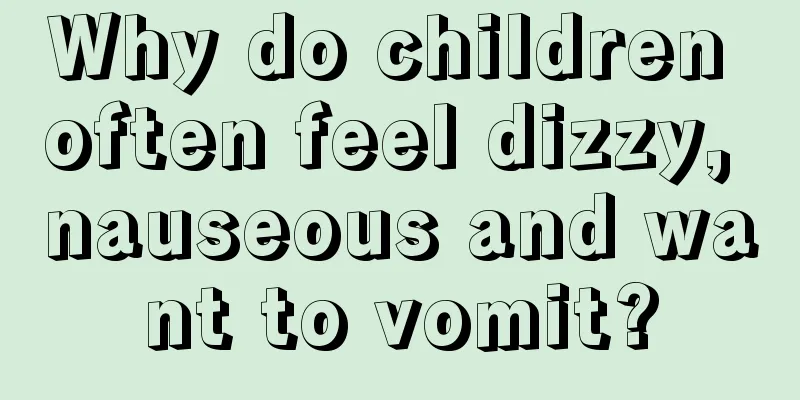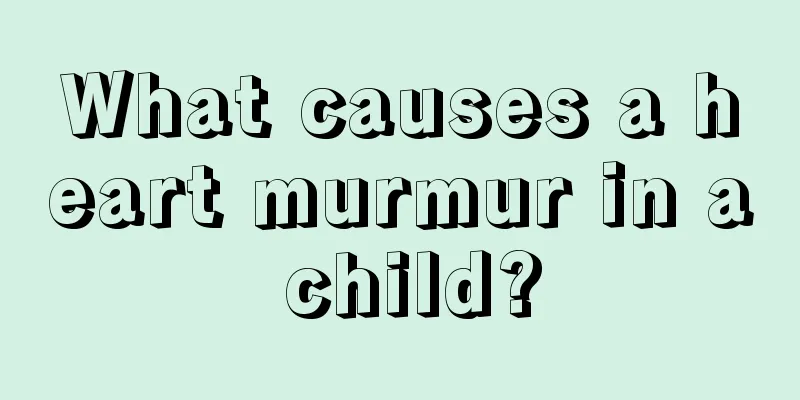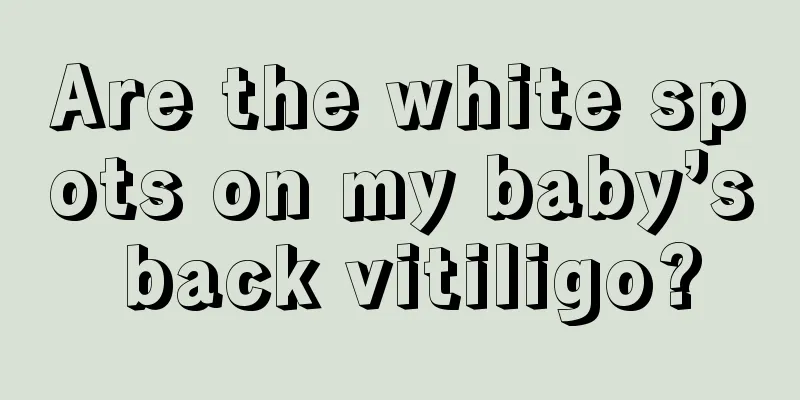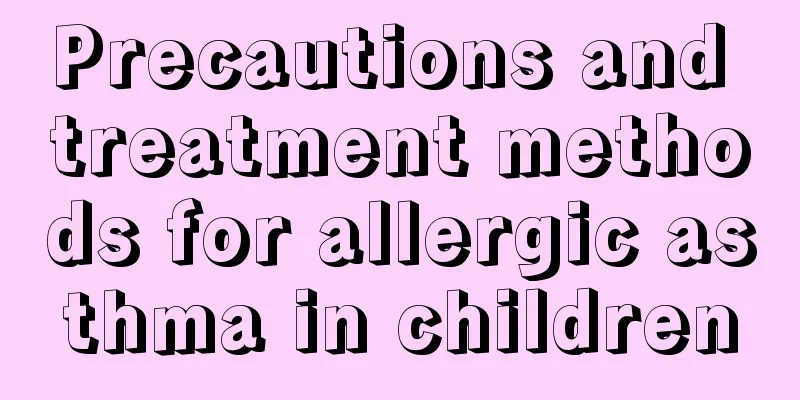How to reduce fever in a three-year-old baby
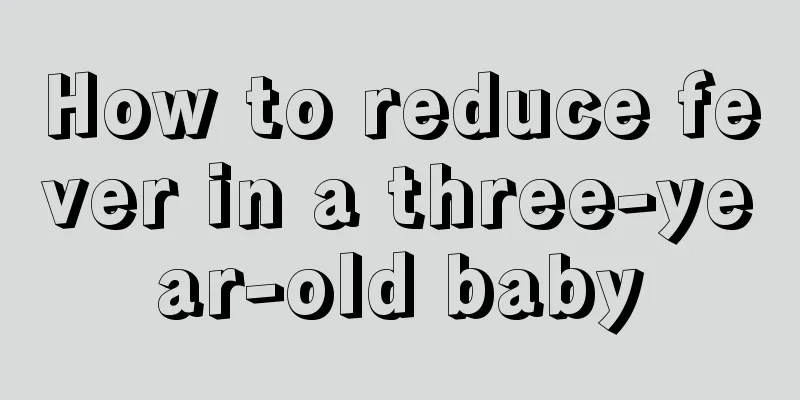
|
How to reduce fever in a three-year-old baby? When a three-year-old baby has a fever, the baby will often feel uncomfortable, have symptoms such as coughing or runny nose, headache, and some babies have no appetite. When the baby has a fever, parents must pay attention to it and take the baby to the hospital in time. However, during the medical treatment process, parents need to use some methods to help the baby reduce the fever quickly. So how to reduce the fever of a three-year-old baby? The following are methods to reduce fever for babies. Tips for quickly reducing fever in children 1. Cold compress The most commonly used method is to apply a cold towel to the forehead, then soak the towel in cold water after it becomes hot and apply it again. You can also go to the store to buy chemical ice packs, put them in the refrigerator when using, take them out after they turn from gel to solid, wrap them in a towel and apply them to the top of the baby's head, forehead, neck, armpits, groin, etc., and they can be used repeatedly. Of course, ice packs can also be made at home. Use disposable medical silicone gloves, fill them with water, tie them into a knot, and put them in the freezer. Use them after they are frozen solid. If you feel the ice is too cold, you can take out the ice bag when it is half ice and half water, wrap it in a towel and apply cold compress to your baby. 2. Warm water bath Undress the baby and rub the whole body with warm water (about 37°C) and a towel. This will dilate the blood vessels in the baby's skin and dissipate body energy. In addition, when water vapor evaporates from the body surface, it will also absorb body heat. 3. Warm alcohol bath Alcohol bath: Mix 70% alcohol with 1/1 tap water, or 75% alcohol with 1/2 water, and place in a small bowl. Keep doors and windows closed during sponge bath, dip gauze or a soft towel in the alcohol in the bowl, and wipe the child's palms, soles, armpits, inner sides of upper arms, chest and thighs. The temperature of the diluted water should be about 37-40℃. Then wipe the limbs and back. Do not wipe directly with alcohol, which will make the children feel very cold, uncomfortable, or even convulse. 4. Egg white reduces fever Beat an egg and get the egg white. Then find a napkin or gauze, apply the egg white on it or soak the gauze, and then stick it on the child's forehead. Change it after a while. You can also get a small wine glass or something like that, with a smaller mouth. Pour the egg white into it, wrap the wine glass with gauze, and then use the mouth of the glass to slowly apply it in circles on the child's forehead. Basically, when the egg white is almost applied, the fever will go away. Generally, the fever will go away within half an hour. It is very effective and does not hurt. 5. Cold Socks Hydrotherapy Prepare a pair of cotton socks and a pair of wool socks. When you have a fever, soak the cotton socks and put them on your feet, and then put the wool socks on the outside, which is equivalent to wearing two layers of socks. When you have a fever, your cotton socks will dry quickly. At this time, soak the cotton socks and put them on again. Repeat this process and the fever will go away within two hours. However, it is important to note that if your symptoms do not improve, you should still see a doctor. 7. Soak your feet in hot water Soaking your feet can promote blood circulation and relieve discomfort. Another benefit of soaking your baby's feet when he has a fever is that it can help reduce the temperature. You can use a large basin or a small bucket for foot soaking. Pour 2/3 of the basin with water. The water temperature should be slightly higher than usual, around 40 degrees Celsius, and it should be based on what the baby can adapt to. When soaking the baby's feet, the mother can rub the baby's two little feet, which can not only dilate the blood vessels but also relieve the discomfort caused by fever. 8. Low temperature chamber method Place the sick child in an environment with a room temperature of about 24 degrees Celsius to slowly lower the body temperature. In order to allow the skin to come into contact with the outside air and thus help cool down, the person should wear less clothes. If conditions permit, air conditioning can be used to lower the room temperature. This method is suitable for babies under 1 month old, especially in summer. Just open the baby's clothes and put him in a cool place, his body temperature will slowly drop. If your baby has chills and shivering when having a fever, you should not use the low-temperature chamber method. 9. Cover the fontanelle Cover the fontanelle. The fontanelle of the baby will not be completely closed before the baby is one and a half years old. Parents can cover the baby's front fontanelle with the palm of their hands after the baby falls asleep until the baby's head sweats slightly. Generally speaking, the baby will start sweating after covering for about 15 to 30 minutes. 10. Use a cooling patch The water in the gelatinous substance of the cooling patch can take away the heat when it vaporizes, and there will be no excessive cooling, which is very helpful for reducing children's fever. |
<<: Can babies eat eggs if they have a cough?
>>: How many months does it take for babies to start brushing their teeth?
Recommend
How is the development of a 14-year-old girl
We all know that when a girl reaches the age of 1...
What to do if your child cannot speak clearly
Children have a strong learning ability and a hig...
What are the bad habits of children that must be corrected?
In life, children often have some bad habits. Man...
Baby's runny nose
Babies are very fragile in the eyes of their pare...
The harm of picky eating in children
I believe that as parents, we can fully understan...
What are the dangers of rabies vaccine to children?
With the improvement of people's living stand...
What is the normal armpit temperature for children?
The normal body temperature of our human body is ...
What causes headache in children?
Children have weak physical resistance and are pr...
How to care for red spots on a two-year-old baby's face
Many parents may not know that the baby’s skin is...
What causes low muscle tone in children?
Many people don’t know what muscle tone is. In fa...
The child's penis hurts and is a little red and swollen
When a child develops balanitis, it often causes ...
What is the reason why small red spots appear on the child’s face after vomiting?
If we are not feeling unwell, we may not vomit at...
What should I do if my child has a dislocated patella? Tell you an effective solution
Patellar dislocation is most likely to occur in c...
What should I do if my baby has hives?
Babies are the focus of care for their parents, a...
The dangers of little girl's leg-clip syndrome
Parents always find that their little girls have ...


